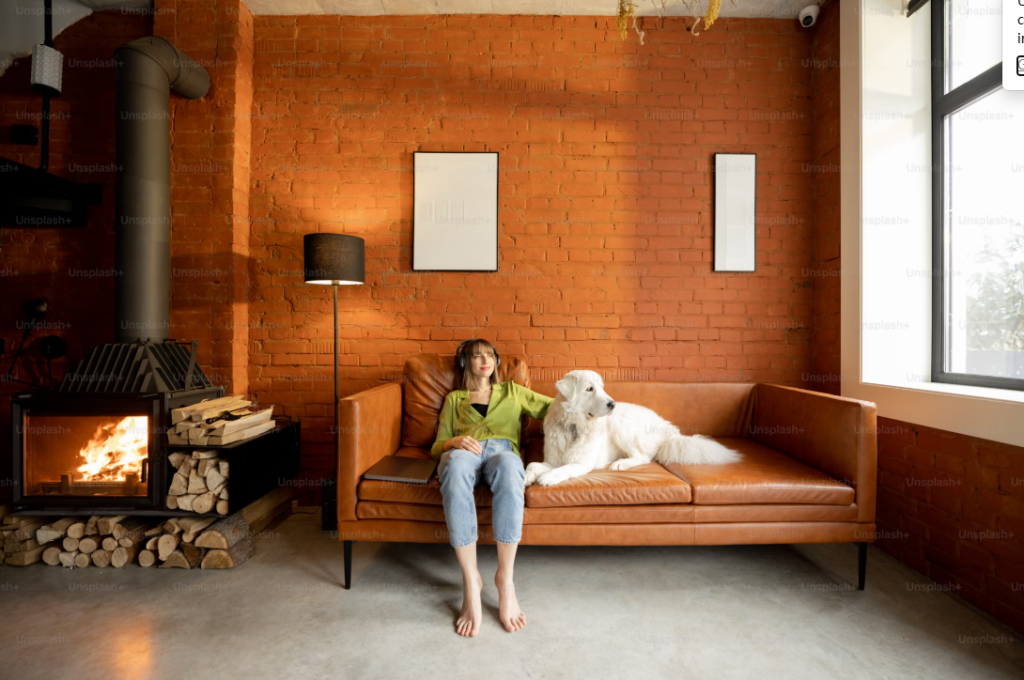
Introduction: Why Cozy Matters?
Creating a cozy home goes beyond just the appearance of a space. It’s about making your living environment feel welcoming, comforting, and safe. We all long for a place where we can unwind, recharge, and truly feel at home. And while a lot of people focus on style and design trends, the secret to a truly inviting space lies in the feeling it evokes. So, how can you turn your house into a warm and inviting haven? Let’s explore five tips to cozy up your home.
Tip 1: Layer Up with Soft Textures
The Power of Fabrics: Pillows, Throws, and Rugs
Textures are key when it comes to making a space feel inviting. When you layer different fabrics—think pillows, throws, and rugs—you instantly add depth and warmth to the room. Imagine walking into a living room where the sofa is draped with soft throws and the floor is covered in a plush rug. It’s not just visually appealing; it begs you to take a seat and relax. These elements create a tactile experience that enhances comfort.
Choosing the Right Fabrics
Not all fabrics are equal when it comes to comfort. Wool, cotton, velvet, and linen are some of the best choices for creating a cozy atmosphere. Velvet, for instance, offers a luxurious, soft feel that can make any couch feel like an indulgent retreat. Wool is perfect for colder seasons, while linen is breathable and ideal for warmer months.
Color Palette Matters
When selecting fabrics, don’t overlook color. Muted tones like soft neutrals, pastels, or deep jewel tones can add warmth to a space without overwhelming it. Think of how a room with a mix of beige cushions, a grey wool throw, and a wool rug in charcoal makes you feel calm, cozy, and comfortable. The right color palette not only complements your space but also has an impact on the mood it evokes.
Tip 2: Play with Lighting
The Role of Lighting in Creating Warmth
Lighting is often the unsung hero of interior design. When done right, it can transform the entire feel of your home. Lighting doesn’t just allow you to see—it’s a crucial element in creating atmosphere. You don’t want harsh, cold lights that feel sterile and uninviting. Instead, opt for soft, warm lighting that adds a sense of calm and relaxation.
Different Types of Lighting
Effective lighting requires a mix of different types: ambient, task, and accent lighting. Ambient lighting is your general overhead light, while task lighting focuses on specific areas where you need more light (like reading or cooking). Accent lighting highlights elements in your space, such as artwork, plants, or architectural features. A combination of all three creates a balanced, inviting atmosphere.
Natural Light vs. Artificial Light
Never underestimate the impact of natural light. It’s free, abundant, and has the power to enhance your mood and energy levels. Where possible, make the most of natural light by using sheer curtains or blinds that let light in while still providing privacy. At night, incorporate soft artificial lighting through table lamps or wall sconces to replicate the warmth of sunlight.
Tip 3: Add Personal Touches
Show Off Your Personality with Décor
Personalizing your space is essential for making it feel truly yours. Your home should reflect your personality, interests, and memories. One of the easiest ways to do this is by incorporating personal items, like photographs, heirlooms, or souvenirs from trips. These elements not only add meaning to your space but also make it feel uniquely yours.
The Power of Photos and Artwork
A well-placed photo or a beautiful piece of artwork can make a big difference in the feel of a room. Choose items that evoke positive emotions or bring back fond memories. A gallery wall with a mix of personal photos and artwork can instantly elevate the vibe of a room, creating a place that’s both comforting and full of life.
Personalized Accessories
Sometimes, the smallest details make the biggest impact. Incorporate personalized accessories like monogrammed towels, custom-made candles, or even unique vases that reflect your style. These little touches might seem insignificant at first, but they go a long way in creating a home that feels warm and inviting.
Tip 4: Bring in Nature
Why Plants Are a Must-Have
Adding greenery to your space is one of the simplest yet most effective ways to make your home feel cozy. Plants bring a touch of nature indoors, adding vibrancy, texture, and life. Whether you have a large potted plant in the corner of the room or a small succulent on a windowsill, plants instantly make a space feel more inviting and calming.
Indoor Plants and Their Benefits
Beyond aesthetics, indoor plants have numerous benefits. They purify the air, increase humidity, and even reduce stress. Studies have shown that having plants around can boost your mood and productivity. So, not only do plants make your space look better, but they also contribute to your well-being.
Natural Materials for Added Texture
In addition to plants, incorporating natural materials like wood, stone, or clay can add texture and depth to your home. A wooden coffee table, stone coasters, or clay vases bring earthy elements into the space, enhancing the natural feel. These materials create a sense of warmth and comfort, making your home feel grounded and inviting.
Tip 5: Create a Comfortable Layout
How the Arrangement of Furniture Affects Comfort
An inviting home isn’t just about the décor; it’s about how the space flows. The arrangement of your furniture plays a big role in how comfortable and welcoming a room feels. Avoid overcrowding the space with too much furniture, as it can make the room feel cramped and chaotic. Instead, focus on creating a layout that promotes easy movement and conversation.
Traffic Flow and Space Planning
When planning your furniture arrangement, consider traffic flow. Ensure there’s enough space to move around without obstruction, and group furniture in a way that encourages interaction. A comfortable seating area with a coffee table in the center invites people to gather, chat, and relax.

Zones for Different Activities
Creating different zones for various activities can enhance the comfort of your home. For instance, a reading nook with a cozy armchair and soft lighting invites you to relax with a book, while a larger seating area encourages socializing. By designating specific spaces for relaxation, work, or entertainment, you create a more functional and inviting environment.
Conclusion
Incorporating these five tips into your home can make a huge difference in how inviting and cozy your space feels. From layering soft textures to playing with lighting, adding personal touches, bringing nature indoors, and creating a thoughtful layout, each element plays a role in creating a comfortable, welcoming environment. By focusing on comfort and warmth, you’ll transform your home into a space where you—and your guests—feel truly at home.

FAQs
- How do I make my home feel cozy on a budget?
- Focus on inexpensive touches like throw pillows, inexpensive lighting options, and DIY décor to add personality without breaking the bank.
- Can I make my space cozy without a lot of furniture?
- Absolutely! A few well-chosen pieces, combined with the right textures and lighting, can create a cozy atmosphere without overcrowding your space.
- What types of plants are best for creating a cozy vibe?
- Low-maintenance plants like snake plants, pothos, and succulents are ideal for adding greenery and warmth to your space.
- What are the best lighting options for a cozy home?
- Opt for warm, soft lighting with a mix of ambient, task, and accent lights. Table lamps and floor lamps are great choices for cozy lighting.
- How do I choose the right color palette for my cozy home?
- Stick to neutral, soft tones with pops of color through accessories. Warm colors like soft beige, taupe, and deep greens work well for creating a cozy atmosphere.



